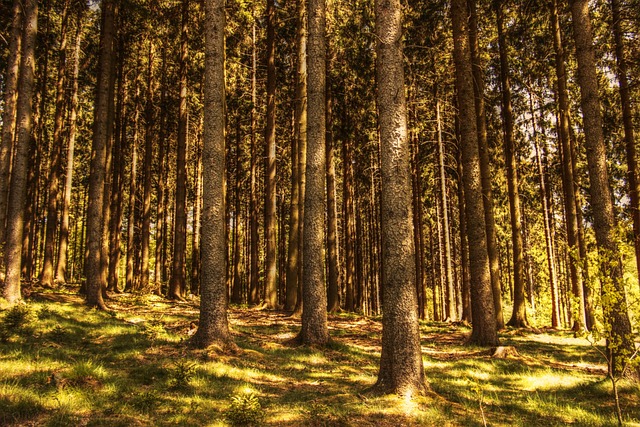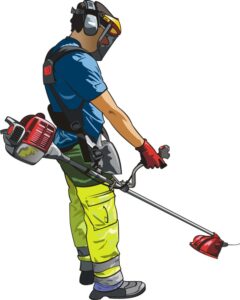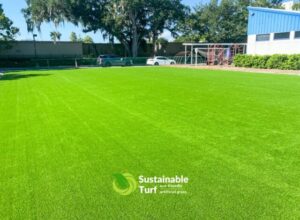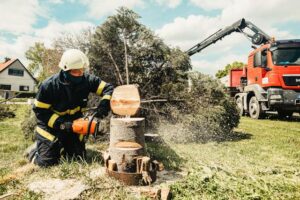
Trees might seem strong and unshakable, but they can get sick just like any other living thing. The problem? They don’t scream for help. They don’t wilt overnight like a houseplant you forgot to water. Instead, they give off small, quiet signs that something isn’t right.
If you catch these signs early, you might be able to save a struggling tree. But if you ignore them, that tree could become a hazard—or worse, die completely. Here’s what to look for and what you can do about it.
1. Leaves That Aren’t Acting Normal
Leaves are like a tree’s health report. If something is off, the leaves will usually show it first.
- Leaves falling too early – If it’s not autumn, but your tree is already shedding a ton of leaves, something’s wrong. Trees drop leaves early when they’re stressed, often because of disease, drought, or root damage.
- Discolored leaves – Yellowing leaves in the middle of summer? Brown or black spots? Patches of white fuzz? These could mean anything from a fungus to a pest problem.
- Sparse or thinning canopy – If your tree’s upper branches seem bare while others are full, that could be a sign of root trouble or disease.
If your tree’s leaves don’t look right, take a closer look at the branches and trunk to find the cause.
2. Bark That’s Peeling, Cracked, or Missing
A tree’s bark is like its skin—it protects everything inside. When the bark starts peeling or cracking, that usually means trouble.
- Deep cracks or holes – These could be signs of disease or decay. Some trees naturally shed bark, but if large sections are missing, it’s worth checking.
- Mushrooms growing on the trunk – Fungi love rotting wood. If you see mushrooms or fungus patches on the bark, your tree might be dying from the inside out.
- Soft, spongy bark – Healthy bark is firm. If it feels mushy or crumbles in your hand, your tree is in serious trouble.
3. Branches That Snap Like Twigs
Every tree drops a few dead branches here and there. But if you’re finding an unusual number of dry, brittle branches on the ground, your tree could be struggling.
- Dead branches that don’t grow leaves – If a branch is bare while the rest of the tree is full, that branch is probably dead.
- Multiple broken branches after a storm – If storms are breaking off limbs easily, your tree might not be as strong as it looks.
- Hollow or cracked branches – Even if a branch is still attached, check for deep cracks or holes. These can make it weak and dangerous.
Dead branches are dangerous because they can fall anytime, especially in bad weather. If you see one, it’s best to have it removed before it causes damage.
4. Roots That Are Exposed, Decaying, or Rotting
Since tree roots are underground, they’re easy to forget about. But if the roots are in trouble, the whole tree is in trouble.
- Roots sticking out of the ground – If you see more roots than usual, your tree might be struggling to hold onto the soil, especially after heavy rain or erosion.
- Mushrooms growing around the base – Just like on the trunk, fungi near the roots can mean decay.
- Tree leaning to one side – A sudden lean could mean the roots are damaged or too weak to support the tree.
If you’re not sure about the roots, look at the ground around your tree. Soft, sinking soil or exposed roots could be a sign of trouble.
5. Weird Growths or Pests on the Tree
Insects and fungus can kill a tree faster than you think. Some signs to watch for:
- Holes in the bark – Tiny holes could mean beetles or borers are eating away inside the tree.
- Sticky sap or sawdust-like material – If you see this near the base, it could be a sign of insect infestation.
- Unusual bulges or growths – Trees can develop galls (odd lumps) or swollen areas when they’re under attack by disease or pests.
Not every insect is bad for trees, but if you see signs of infestation, it’s best to act fast.
6. Signs of Disease in Common Trees
Some trees are more vulnerable to disease than others. If you have Leyland Cypress trees, for example, you might notice their needles turning brown or entire branches dying off. This could be due to root rot or fungal infections. If you’re seeing these signs, it’s important to understand common Leyland Cypress Tree Health issues to identify the cause and find the best solution.
Other common tree diseases include:
- Dutch elm disease – Leaves turn yellow and wilt, often killing branches quickly.
- Oak wilt – Causes sudden leaf drop and can spread through the roots.
- Anthracnose – Creates brown spots on leaves and can weaken the tree over time.
If you suspect disease, look up symptoms for your tree type or call an arborist before it spreads.
7. A Tree That Just Feels “Off”
Sometimes, you don’t need a checklist. If your tree looks sick, grows slower than usual, or just seems weaker than the others in your yard, something might be wrong.
Trust your gut. A healthy tree should be full, sturdy, and growing new leaves each year. If yours isn’t, it’s worth investigating.
What to Do If You See These Warning Signs?
Not all tree problems mean disaster, but they shouldn’t be ignored. Here’s what you can do:
- Water wisely – Too much or too little water can cause problems. Make sure your tree is getting what it needs based on its species.
- Trim dead branches – Cutting off dead limbs can help prevent disease and keep the tree safe.
- Check soil and roots – Healthy soil means healthy trees. If your tree looks weak, consider testing the soil for nutrients.
- Call a professional – If you’re unsure, a tree expert (arborist) can tell you if your tree is sick, dying, or just needs a little extra care.
Keep an Eye on Your Trees
Trees can’t talk, but they do send signals when they need help. The key is paying attention before the problem gets out of hand. If you notice peeling bark, weak branches, or strange growths, don’t wait—find out what’s causing it and take action.
A little care goes a long way; with the right attention, you can keep your trees standing tall and healthy for years to come.




